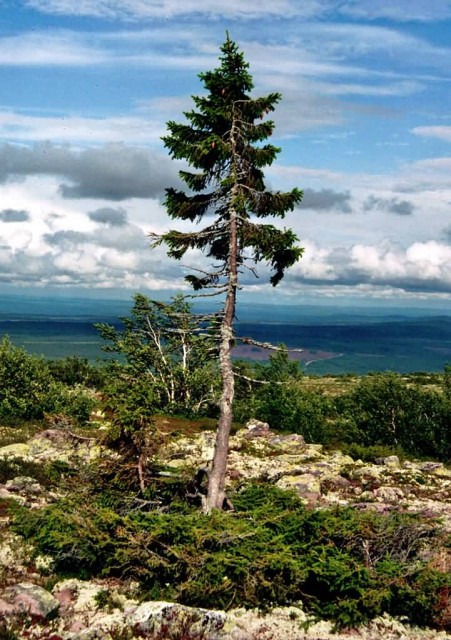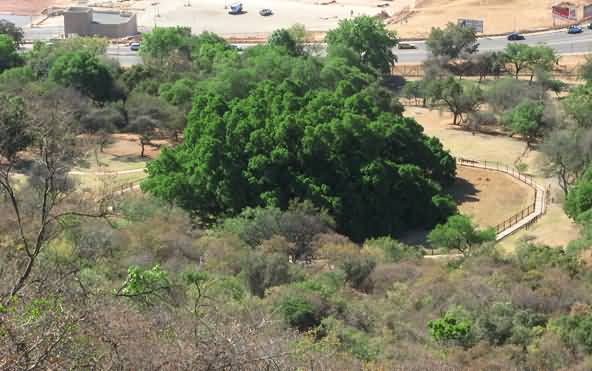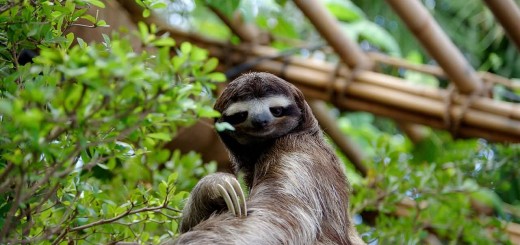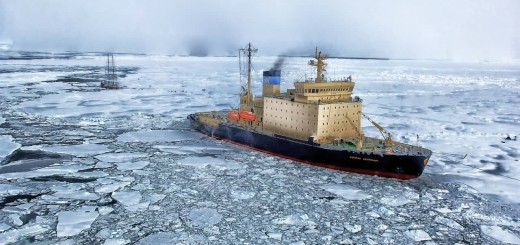7 Most Notable Trees That Has A Unique Importants

The Great Banyan Tree (Photo Credit: Biswarup Ganguly / CC BY 3.0)
The Great Banyan
The Great Banyan is a banyan tree located in Acharya Jagadish Chandra Bose Indian Botanic Garden, Howrah, near Kolkata, India. It was the widest tree in the world in terms of the area of the canopy and is estimated to be about 1200 to 1250 years old. A 330 metre long road was built around its circumference, but the tree continues to spread beyond it.

The Great Banyan Tree (Photo Credit: McKay Savage / CC BY 2.0)
There is no clear history of the tree, but it is mentioned in some travel books of the nineteenth century. It was damaged by two great cyclones in 1884 and 1886, when some of its main branches were broken and exposed to the attack of a hard fungus. The Great Banyan looks more like a forest than an individual tree. The tree now lives without its main trunk, which decayed and was removed in 1925.

The Great Banyan Tree (Photo Credit: Biswarup Ganguly / CC BY 3.0)
Magnolia Grandiflora

Magnolia Grandiflora Flowering Plant (Photo Credit: Forest and Kim Starr / CC BY 2.0)
The Magnolia grandiflora at 679 Lafayette Avenue, Brooklyn is the only tree that is a designated New York City landmark. The specimen is a rare example of a flourishing laurel magnolia growing as far north as New York. The tree was brought as a seedling from North Carolina and planted around 1885 by William Lemken.
Beginning in the 1950s, it was protected by Hattie Carthan, who enlisted neighborhood schoolchildren to help raise money to protect the tree, which was threatened by the construction of a parking lot. After the trees designation as a landmark, Carthan founded Magnolia Tree Earth Center, a non-profit focused on urban beautification and environmental awareness. The center is housed in the brownstone adjacent to the tree.
Tree That Owns Itself

Tree That Owns Itself (Photo Credit: Bloodofox / Public Domain)
The Tree That Owns Itself is a white oak tree, widely assumed to have legal ownership of itself and of all land within 8 feet of its base. The tree, also called the Jackson Oak, is located at the corner of South Finley and Dearing Streets in Athens, Georgia, United States.
The tree was considered by some to be both the biggest tree in Athens and the most famous tree in the United States. The original tree fell in 1942, but a new tree was grown from one of its acorns and planted in the same location. The current tree is sometimes referred to as the Son of The Tree That Owns Itself. Both trees have appeared in numerous national publications and the site is a local landmark.

Old Stone Plaque (Photo Credit: Public Domain)
Treaty Oak
The Treaty Oak is an octopus-like Southern live oak in Jacksonville, Florida. The tree is estimated to be 250 years old and may be the single oldest living thing in Jacksonville, predating the founding of the city by Isaiah Hart during the 1820s. It is located in Treaty Oak Park in the Southbank area of Downtown Jacksonville. The tree has a trunk over 25 feet in circumference, it rises to height of 70 feet and its crown spreads over 145 feet with twisting branches that bow to the ground and curl back up. The oak shades a roughly circular area, about 190 feet in diameter.
The name is generally believed to be related to some local apocryphal stories about peace accords between Native Americans and Spanish or American settlers signed under its branches. In reality, the name was created by the Florida Times-Union journalist Pat Moran who, in an attempt to rescue it from destruction by developers, wrote an article in the early 1930s claiming a treaty had been signed at the site by native Floridians and early settlers and called it Treaty Oak.

Treaty Oak In Jacksonville (Photo Credit: James Willamor / CC BY-SA 2.0)
Old Tjikko
Old Tjikko is estimated to be at least 9,550 years old, making it the world’s oldest known individual vegetatively cloned tree. It stands 5 metres (16 ft) tall and is located on Fulufjället Mountain of Dalarna province in Sweden. The age of the tree was determined by carbon dating of genetically matched plant material collected from under the tree, not by dendrochronology or counting tree rings.
The trunk itself is estimated to be only a few hundred years old, but the plant has survived for much longer due to a process known as layering (when a branch comes in contact with the ground, it sprouts a new root) or vegetative cloning (when the trunk dies but the root system is still alive, it may sprout a new trunk). The man who discovered the tree, Leif Kullman has attributed this growth spurt to global warming and given the tree its nickname “Old Tjikko” after his late dog.

Old Tjikko Is A Tree In Sweden (Photo Credit: Karl Brodowsky / CC BY 3.0)
Wonderboom

Wonderboom Tree (Photo Credit: Borisgorelik / CC BY-SA 3.0)
The Wonderboom is an evergreen fig species that ranges from the KwaZulu-Natal midlands northwards to tropical East Africa. It grows especially on outcrops, rocky hillsides and along cliffs fringing water courses and may rarely grow up to 10 m tall and acquire a leafy spreading crown. The leaves are 7 to 10 cm long, carried on long petioles and are often noticeably folded along the midrib. The leaf sides are almost parallel and clear net-veining is visible on the lamina.

Wonderboom Leaves And Fruits (Photo Credit: Paul venter / CC BY-SA 3.0)
Leaves are brittle and have a characteristic smell when broken or bruised. The leaves are toxic and cause nervous disorders or even deaths in cattle. It is named after the Wonderboom grove in Pretoria, that has spread from a central bole that was carbon dated to about a 1,000 years old. The Wonderboom is an extraordinary specimen for its size and structure and its drooping branches are continuing to root and form new trees.

Die Wonderboom In Nature Reserve (Photo Credit: JMK / CC BY-SA 3.0)
Cotton Tree
The Cotton Tree is a Ceiba pentandra, a historic symbol of Freetown, the capital city of Sierra Leone. According to legend, the “Cotton Tree” gained importance in 1792 when a group of former African American slaves, who had gained their freedom by fighting for the British during the American War of Independence, settled the site of modern Freetown.
According to tradition, they landed on the shoreline and walked up to a giant tree just above the bay and held a thanksgiving service there, gathering around the tree in a large group and praying and singing hymns to thank God for their deliverance to a free land. Its exact age is unknown, but it is known to have existed in 1787. Today, a huge Cotton Tree stands in the oldest part of Freetown near the Supreme Court building, music club building and the National Museum.

Cotton Tree (Photo Credit: addianto / CC BY-SA 2.0)
















